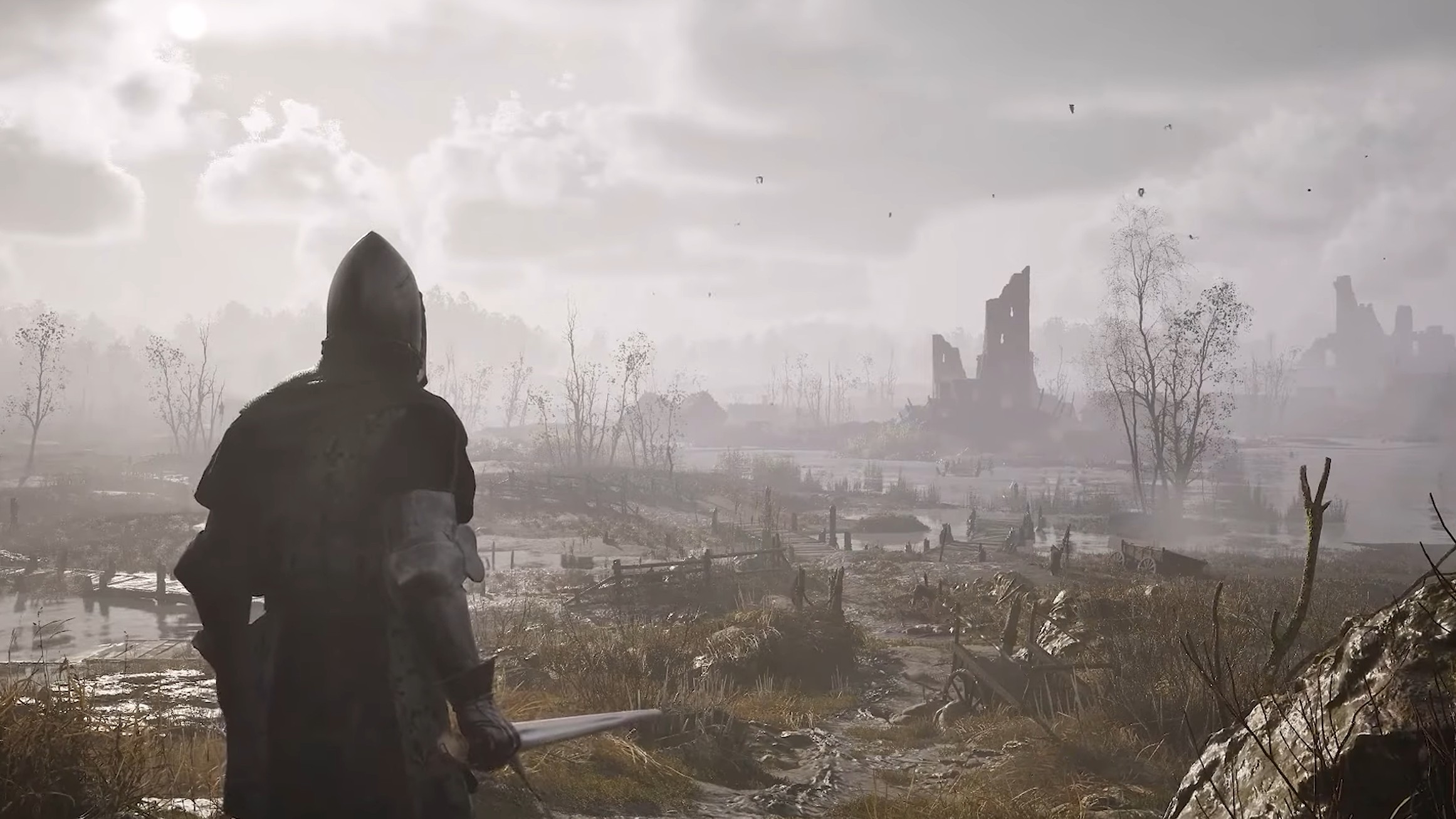
Salem's Lot Review
One of the joys of being a Constant Reader of Stephen King’s horror is seeing how the master applies the trappings of genre to whatever story he’s got on his mind. His second novel, 1975’s ’Salem’s Lot, used the story of (and vampire lore established by) Bram Stoker’s Dracula, to explore the slow death of small town America. It’s a topic that still has a lot of relevancy and potency today, which brings me to a frequent source of sorrow with screen adaptations of the author’s work: How often the heart of King’s writing seems to get lost in translation.
The experience of watching Max’s new Salem’s Lot – which follows two previous miniseries versions, the first directed by Texas Chainsaw Massacre‘s Tobe Hooper – closely mirrors what writer Ben Mears (Lewis Pullman) goes through upon returning to his hometown of Jerusalem’s Lot, Maine. When he arrives with the goal of finishing his latest book, the sights and sounds instantly evoke a setting natural to a King story; sweeping shots of idyllic small-town Maine set the stage well. (Yes, Salem’s Lot was shot in Massachusetts, but as a proud son of New Hampshire, I’m used to meeting those two states in the middle.) Within the first five minutes, King adaptation mainstay William Sadler is trying on a town constable’s uniform and Fred Gwynne’s Pet Sematary accent to scold Ben about not causing trouble under his watch. Good signs so far.
We’re quickly introduced to a deep bench of folksy supporting characters including real estate student Susan Norton (Makenzie Leigh), teacher Matt Burke (Bill Camp), open-minded Dr. Cody (Alfre Woodard) and horror buff Mark Petrie (Jordan Preston Carter). Each has a world-weariness and small-town street smarts that make their eventual team-up feel like a natural progression for people with both the attention and imagination to accept that evil is creeping through their town – in the form of nocturnal, bloodsucking fiends from beyond the grave. They’re all easy characters to root for, but you won’t get to know any of them to a degree that makes their eventual brushes with death all that impactful.
It’s this collection of Mainers who first notice the strange circumstances and disappearances that seem to coincide with the arrival of antiques salesman Richard Straker (Pilou Asbæk) and his mysterious associate, Barlow. And as the disappearances begin, director Gary Dauberman seems to have a real command on the simmering terror of the book. As brothers Ralph and Danny Glick walk home together in the woods at dusk – one of the movie’s more arresting visuals – Straker’s appearance and capture of Danny is a genuine gut punch. And when Ralph thinks his brother has returned home in the middle of the night, Dauberman moves the action out of Ralph’s overlit bedroom and into the moody, misty backyard and draws the tension out to a breaking point. Salem’s Lot is at its best during these moments, in which Dauberman marshals a surreality that at times approaches the indelible creepiness Tobe Hooper managed to smuggle onto primetime in 1979. But as the movie rushes towards confronting the vampires more directly, the sense of style and substance that Dauberman achieves in act one vanishes. It’s a dynamic that plays itself out through most of the scares that follow – well-structured build-up and uninspired payoff.
As Ben and his new friends quickly accept the nature of the threat facing their town, Salem’s Lot starts to fumble what makes King’s take on vampires as a symbol so powerful. Sure, characters like Matt Burke and Parkins Gillespie (a name fit for a King character if ever there was one) toss off stray observations about how the town was on the decline before Barlow and Straker showed up, and how that relates to the nature of society and all that. But none of it resonates because there’s never all that much time taken to flesh out who these people are, or what their histories with the Lot are, and it makes their ruminations feel inauthentic. It leaves their neighbors who are getting vamped feeling nondescript and interchangeable – and that really comes across in how bland the repeated vampire kills become by the end.
Salem’s Lot sired plenty of other books and movies about vampires, and unfortunately, this rendition starts to feel like it’s aping the novel’s imitators. The bloodsuckers are treated more like zombie soldiers than people who are still conscious – if not technically alive – and balancing a thirst for hemoglobin with their lingering humanity. “Generic vampire movie” is not a label I’m happy to apply to Salem’s Lot, but by the time Dauberman sands the sinister Barlow down into a near-mute super vampire monster with CG eyes, it feels like it fits. This movie gets a lot of mileage out of glowing peepers, and quick cuts to mindless attackers rushing the main characters. By the time glowing crucifixes are being swung around like vampire lightsabers, it starts to feel like there’s no real perspective on why this story’s being told in the first place. It’s especially frustrating, considering that what King was observing about small-town American life in the 1970s has only accelerated and mutated in the last 49 years.
A lot of the issues here stem from an overzealous faithfulness to the word (if not the spirit) of the source material. Salem’s Lot is careful to touch on nearly every major scene from the novel, and to include every character it can, but there’s just not enough time to cover all that breadth with any depth. And this is coming from Dauberman, who wrangled a far-more unwieldy King bestseller into the scripts for IT: Chapter One and Chapter Two. That went about as well as could be hoped for thanks to smart alterations: IT’s interweaving of past and present works well on the page, but isolating each time period to its own film may have been the smarter cinematic choice. Salem’s Lot may be a simple story – it’s Dracula in modern-day New England – but simple stories can still take time to tell right, and it feels like this telling is in a trance at times, doing whatever it can do come in under a two-hour runtime.
Which leads me to the elephant in the room: Salem’s Lot has been kicked around Warner Bros.’ release calendar for years at this point. That’s not always an indicator of poor quality… but it’s also no vote of confidence, and unfortunately, that bears out here. The frenetic pace the movie adopts as it goes on feels like it was introduced in post-production to liven things up. The final confrontation in the book, a quite intimate and moody affair, gets rejiggered here into an overblown action sequence that feels so needlessly showy that it almost has to have been the result of a studio note. Moving the climax away from the Marsten House, an iconic horror image in its own right and one that the studio has been happy to sell the movie on, feels like moving the Jack/Danny hedge maze chase in The Shining down to the supermarket in Sidewinder for the sake of doing something different. Some things just don’t need to be messed with. Dracula proved a fine enough framework for Stephen King in the 1970s. The people behind Salem’s Lot are sometimes too content to just follow along with the book – but the cracks start to show when they stray too far from the Lot, too.








